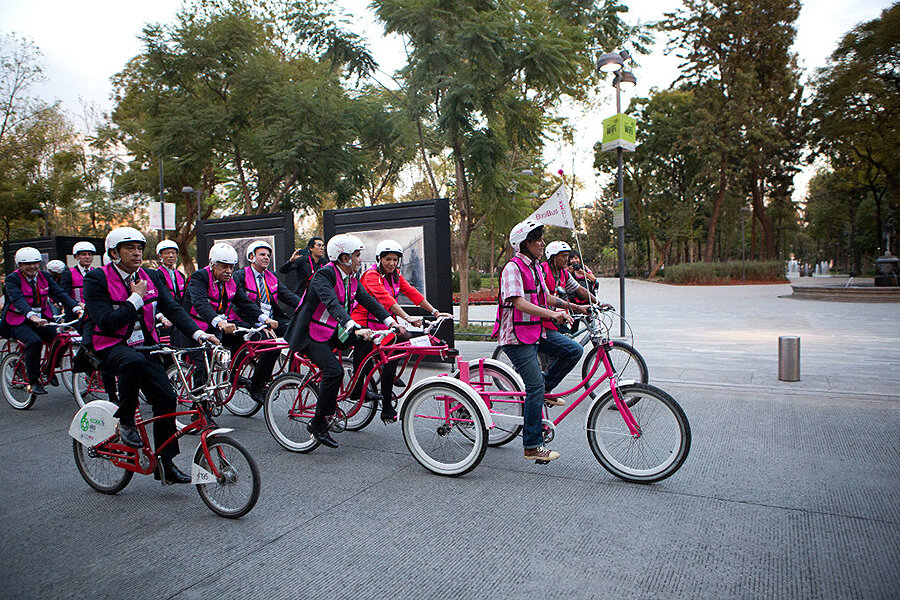Megacity mayors chart road maps to cut carbon emissions
Loading...
In order to meet the Paris climate agreement's goal to cap global warming at 2 degrees Celsius above pre-industrial levels, cities will have to play a significant role, dozens of mayors affirmed at the C40 summit this week.
This week, leaders from about 90 megacities around the globe are gathering in Mexico City for the C40 urban summit to discuss long-term solutions for cutting carbon pollution by reducing greenhouse gas emissions.
"If we are going to avoid the worst impacts of global warming, cities are going to have to play an even bigger role in the months and years ahead," former New York Mayor Michael Bloomberg, a UN special envoy for climate change and the C40 board president, told reporters, according to Agence France-Presse. "They know it is in their best interest."
Together, the C40 cities account for one quarter for the global economy and house more than 650 million people. Around the world, cities produce up to 70 percent of greenhouse gases, according to UN figures. The Paris climate agreement "cannot be realistically delivered" without the help of megacities, C40 executive director Mark Watts told reporters.
"Deadline 2020," a report unveiled at the summit on Thursday, lays out four paths toward reducing cities' greenhouse gases, based on each metropolis' wealth and current CO2 emission.
Wealthy cities with high levels of CO2 emissions, such as New York, would be expected to immediately cut carbon pollution, while poorer cities with high per capita CO2 output, would be granted a brief period of increasing emissions before making cuts. Wealthy cities with low levels today, like Seoul, would be expected to keep dropping, while poorer cities with lower CO2 levels, would have a longer period to implement emissions-cutting strategies.
Concerns about the United States' commitment to global environmental commitments under the incoming Trump administration, in particular, have turned many climate advocates' attention to state and local governments, as well as the private sector. President-elect Donald Trump has suggested he would revive the coal industry, roll back environmental regulations, and try to pull the US out of the Paris climate agreement.
"Denial doesn't stop climate change accelerating so it's even more important for cities to do their bit," Sydney Lord Mayor Clover Moore told Reuters. "An important message from Sydney to the US cities is: 'Notwithstanding a Trump-type government, you can get on and do an incredible amount.'"
In recent years, multiple coalitions of mayors, both in the US and internationally, have vowed to tackle climate change with or without the help of federal governments. In July 2015, 60 big-city mayors convened at the Vatican to discuss emissions strategies, and the Global Covenant of Mayors for Climate and Energy represents more than 7,000 cities. Earlier this month, 40 US mayors sent a letter to the president-elect, affirming their commitment to environmental initiatives.
"On a rough sort of basis, mayors tend to control most of the serious levers connected to the transport systems, the waste management systems, and tend to have powers over regulating buildings – and therefore the energy consumption in buildings, which is one of the largest sources of greenhouse gas emissions in Western cities, at least," Mr. Watts, the executive director of C40, told The Christian Science Monitor last year.
This report includes material from Reuters.








